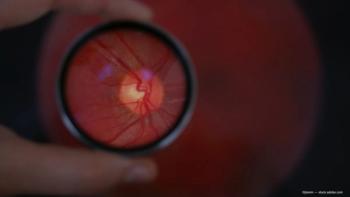
What to expect from ASRS 2025
Key Takeaways
- The ASRS meeting will focus on new clinical trials, surgical practices, and technological innovations, featuring a surgical summit and international specialists.
- Emphasis on new data will be prioritized, with invited talks from global experts in imaging, neuro-ophthalmology, oncology, and amniotic membrane transplants.
In preparation for the American Society of Retina Specialist (ASRS) annual meeting being held in Long Beach, California, Ophthalmology spoke with Gaurav Shah MD, FASRS, Program Chair of the 2025 event.
The American Society of Retina Specialist (ASRS) is set to hold its annual meeting in Long Beach, California from July 30 through August 2. A highlight of the year for many retina specialists in the United States and from around the globe, this meeting brings together researchers to discuss and present on the latest clinical trials, surgical practices, and technological innovations to better serve patients.
Gaurav Shah MD, FASRS, is serving at the Program Chair for the 2025 meeting. He spoke with Modern Retina ahead of the event to share what attendees can expect. The meeting’s scientific program will reflect new technology and surgical innovations, especially on the first day of the meeting, which will feature a surgical summit. This summit will display the talents of not only US retina specialists by the skills of the international community from Asia, Europe, and the Americas. The meeting will also have a surgical experience center and a wet lab during the expo.
Alongside the attention on surgical practices, the focus on clinical trials will emphasize the latest developments. Shah noted, “most of the presentations you're going to hear will be, be new. I do think there is exhaustion when people hear the same data being presented multiple times, and we've taken great care into making sure that if there is something new, we're going to certainly give it preference.” There will also be invited presentations. Shah spoke to these presentations, saying, “Another unique feature, is that we're going to have updates invited talks in imaging, in neuro-ophthalmology, in oncology, and in amniotic membrane transplants. These are going to be invited talks by literally, the leading experts in the world who are going to give us their time.”
The committee has seen a record number of abstract submissions and has taken the time to curate the abstracts, papers, and posters to create a robust meeting. This will include a wide variety of content in a papers-on-demand format to allow attendees to explore topics beyond the podium presentations.
To bring a new level of discussion to the meeting, attendees will have the opportunity to ask questions not only by passing the microphone during question-and-answer portions of the meeting but also be submitted questions via the meeting’s chat feature. “We expect this meeting to be very interactive, and everybody is going to be a driver rather than a passenger in this meeting,” Shah said.
While the scientific program of ASRS is the focus of the event, the organizers have paid careful attention to the social experiences that await the attendees. With the location front and center, southern California cuisine and the beauty of the oceanside city of Long Beach will be the focus. The closing reception for ASRS 2025 will be held on the Queen Mary and will feature a sit-down meal with a live band.
Newsletter
Don’t miss out—get Ophthalmology Times updates on the latest clinical advancements and expert interviews, straight to your inbox.









































